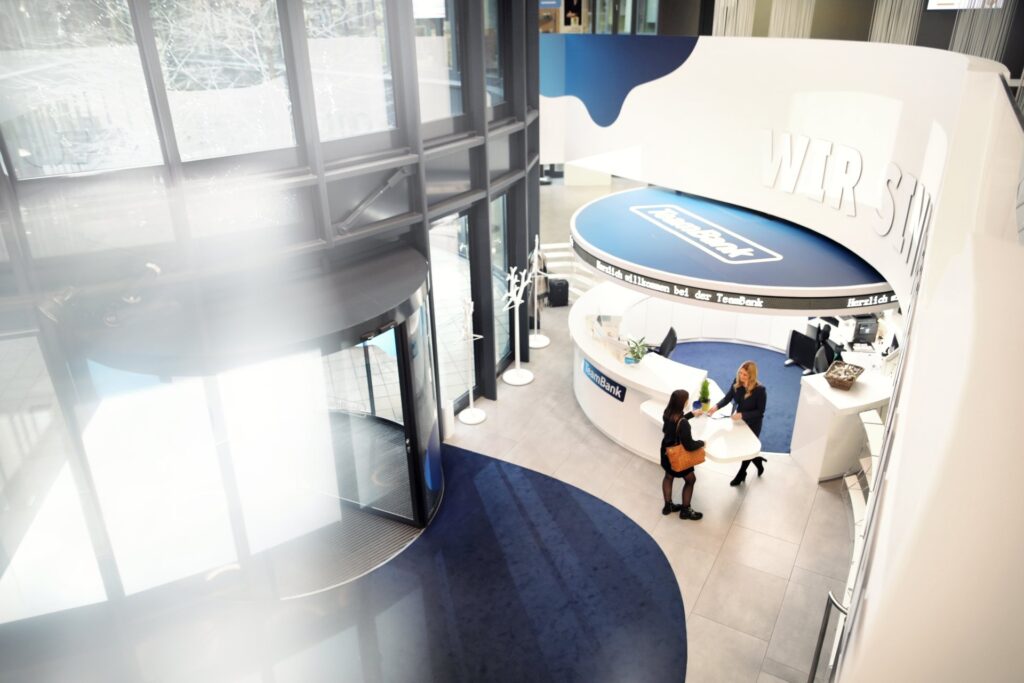Our Interviewpartner
Hello Mr. Klein! Please tell us a little bit about yourself, your role at TeamBank and your daily tasks.
I’ve had a somewhat special organizational role at TeamBank since 2018. Internally, my position is known as “Digital Efficiency”. My job is to determine whether and how the company can optimize processes such as its authorization and project management methods with the help of technical solutions.
One of my tasks, in the course of optimizing our processes for managing project portfolios, was the introduction of a PPM tool. Previously, managing our project portfolio required a great deal of manual effort. It was very time-consuming to handle the data, and it was virtually impossible to do any planning based on live data.

Lucas Klein, Organizational Manager for Digital Efficiency
Selection and Test with Proof of Concept
During the selection process, you looked at several tools and ultimately opted for Clarity. To what extent was the proof of concept a factor in your decision?
While the sales demo showed us everything the tool can do, this didn’t yet tell us whether the software can really handle the use cases that are most relevant for us. The proof of concept (PoC) thus enabled us to find out whether the solution met all our criteria and to look at priority areas in detail. The big advantage was that we didn’t just work with non-specific dummy data, but were able to import specific, and therefore realistic, project data. The PoC thus served as a kind of functional and technical validation that allowed us to determine whether the tool delivers what it promises and if it actually matches our use cases.
Implementation with Proof of Concept
In what way did the proof of concept help you during the subsequent implementation phase?
In addition to the technical and functional validation, the proof of concept also acted as internal marketing for Clarity. It enabled us to make the tool tangible for future users at an early stage and increase the acceptance for the introduction of a new software. Future users were thus able to try their hands at using the tool and get a feel for it, which made it possible to generate a basic level of acceptance for the introduction of Clarity right from the start. We also built up know-how among our staff during this phase, for example, how to set up simple configurations in the tool.
More Tips for Implementation
What approach would you recommend to others during the implementation, besides the proof of concept?
Taking an iterative approach to implementing Clarity can significantly boost acceptance of the tool among future users. At TeamBank, we found that it’s very helpful to gradually introduce individual functions that are aimed at replacing our existing processes. This allows employees to get used to new ways of working and makes them more likely to embrace them. Over time, the range of functions can then be continuously expanded.
Added Value of Clarity in Daily Business
How is Clarity used at TeamBank on a day-to-day basis, and how does it assist the company in this regard?
We use Clarity primarily for the optimization of our project portfolio and resource management processes. Typical use cases include project approval, portfolio planning, change requests and reporting.
Thanks to Clarity, we managed to unify our resource management processes and to expand them to other, previously neglected, resource-related areas. In addition, we’ve also introduced a role-based resource management method. Manual, time-consuming processes relating to data queries have now been replaced by Clarity as the central planning location. It was important for us to be able to track any planning changes directly, which is exactly what Clarity and the Advanced Resource Planning add-on provide: Live data are now always available. It’s therefore no longer necessary to rely on theoretical assumptions during the planning process.
Partnerschaft with itdesign
What has been your experience with itdesign as your partner so far?
itdesign provided tremendous support during the PoC and implementation phase and continues to do so to this day. It is very helpful to know that there’s someone in the background that we can always turn to. Our partnership with itdesign has always been very positive and collaborative, both in terms of coordination and flexibility.
TeamBank AG
With its easyCredit product line, TeamBank AG acts as a specialist hub for modern liquidity management within the Genossenschaftliche FinanzGruppe Volksbanken Raiffeisenbanken, a German cooperative banking group. Important elements of the ecosystem include, for example, the easyCredit instalment loan product and the ratenkauf by easyCredit payment procedure. Customers can take advantage of both products in a fully digital, mobile and seamless manner.
- Financial services
- 1,113 employees
- Nuremberg, Germany
- Founded in 1950
- Clarity & itd Advanced Resource Planning
Experience Clarity Live!
We would be happy to demonstrate the features of Clarity to you in a live system. Let us know what you are particularly interested in, and then we can arrange our first web session together.

Read Next

Interview: Implementing Clarity at Bausparkasse Schwäbisch Hall




